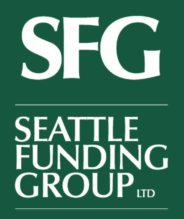What strengthens real estate markets? What makes them weak? There are so many different factors that drive the fluctuating real estate markets of the U.S., that it is impossible to track everything. Some cities are currently experiencing a booming housing market, while others are not. Some are in the midst of rapid new development, while others have lagged. In this post, we explore some of the conditions that alter commercial markets. Believe us, there are definitely more than three, but these are just a few we have heard discussed lately:
- Foreign Investment Attractiveness
Foreign Investment is a topic that we visited with Ron Lorentsen back in October last year. It’s no secret that recently (past 4-5 years), cities such as New York, San Francisco, Los Angeles, Seattle, etc. have experienced a high volume of foreign investment dollars coming into commercial real estate. These cities are attractive to foreign investors. At Seattle Funding Group (SFG), our commercial loan program has received loan requests from many foreign investors (in both Seattle and San Diego alike). Little by little, all of this foreign interest has increased the amount of commercial loans being issued, and contributed to higher prices in many of the cities mentioned above.Yet, are the number of foreign commercial loans declining? One residential focused article raises the question of whether or not overseas buyers still see U.S. investments as worth-while. This in turn could affect the number of commercial loans applied for. As of now at SFG we have noticed fewer foreign commercial loan requests coming in, but it is important to keep in mind that this is expected eventually. Ron made the point that “just like other markets, this one [foreign investment] is cyclical.” This is absolutely true. Intelligent investors find ways to invest their money both domestically and abroad, but the overarching theme is that it still needs to make sense. The U.S. has generally been a safe investment opportunity, but that doesn’t mean investors always have the ability or capital to constantly invest. Exchange rates, currency controls and even a simple “feeling of wealth” could all be factors in the decision to apply for a commercial loan (or any type of loan/purchase for that matter) in a foreign country.This certainly does not however, close a door on the commercial loan program. Instead, it opens up the opportunity to work with new domestic clients looking for commercial loans in core markets. When the dollar is strong, domestic buyers generally have more buying power! Remember that in real estate, rarely is something absolute; so even if some observe a trend, there can always be outliers.
- A City’s Ability for Physical Expansion
Variation in commercial markets across the U.S. also has to do with a city’s physical and economical barriers. For instance, if you live in Seattle or San Diego (and if not, we do!) you’re probably aware of the high prices and low supply of single family homes. In fact, many brokers are even worried because although demand is high, they cannot sell non-existent inventory! This Seattle Times article discusses the demand throughout King County, WA vs. the lack of listings showing up.In addition, development in Seattle and San Diego is high density. There are many physical barriers surrounding each city: The Puget Sound, The Cascades, San Diego Bay, the Pacific Ocean etc. Even the location of freeways can act as barriers when it comes to development. Now contrast Seattle or San Diego with a place like Phoenix. The density is much more wide spread in Phoenix because so much of it is, well, desert! There is a ton of residential, planned communities and multi-family developments going up in suburbs there, and a lot of office development happening in the urban centers. At first glance this may seem negative to cities with less new development. However, at SFG we have already experienced a sizable amount of commercial loans thus far in 2016. So just because the amount of construction loans in a city may be slow or in a down cycle, it doesn’t mean commercial loans aren’t happening! - General ‘Happenings’ in the Country/World
A third factor (again, there are MANY more factors than just these three) affecting any given city’s commercial sector’s performance, is the general state of the economy. Houston, (we’ll choose this because it was in the news and a market we like to keep an eye on) for example has been booming in recent years. A lot of commercial loans and commercial activity was moving through the area, and now it has slowed down. One reason for this is oil. Oil is a primary industry in Houston, and because its availability has skyrocketed and countries in the Middle East are lowering prices, it has hurt the commercial sector there.
As for a 2016 outlook, opinions are mixed (obviously). Generally, economists tend to be a little more optimistic, and investors a little more cautious. In a report Morgan Stanley published, they felt that in a situation where Investor’s leverage-level expectations cannot be met, other economic factors won’t allow the loss to be made-up, aka: rising interest rates, low corporate earnings or even a potential recession. On the flip side, This World Property Journal article discusses the present state of strong demand in primary/core markets, as well rental rates and occupancy rising. A much more optimistic view.
What we can take away is that all markets are different, and they are all affected in different ways by different factors. Something we pride ourselves on is maintaining a strong knowledge of the markets in which we focus, primarily the West Coast. SFG specializes in primary markets and the highest quality products within them. Our expert staff is always standing by, ready to help you in whatever commercial loan services you may need!

